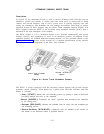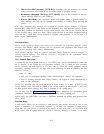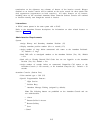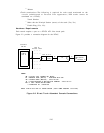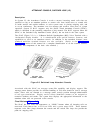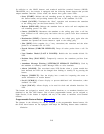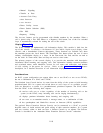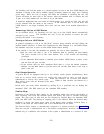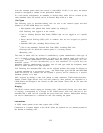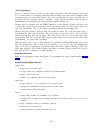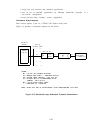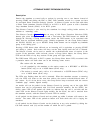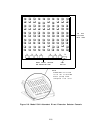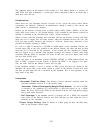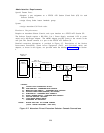An incoming call from the queue to a console appears on one of the five LOOP buttons; the
attendant is alerted to the call by audible ringing, a steadily lighted red lamp, and a flashing
green lamp.
While the call is ringing and while the attendant is handling the call, the
system will direct no more calls to the console. After the attendant ends or releases the call
or puts it on hold, another call can come in on an idle button.
It should be emphasized that even when all LOOP buttons on a console are idle, only one call
can be directed from the queue to the console.
If the attendant puts a call on hold, that
LOOP button is no longer available, but a new call can come in on another button that is
idle.
Answering a Call on a LOOP Button
At an available SLAC, an incoming call will ring at an idle LOOP button automatically
selected by the system.
The attendant has only to lift the handset to answer the call;
pressing the button is not necessary.
Placing a Call on a LOOP Button
In general, originating a call at an idle SLAC involves going off-hook and then dialing the
desired number. However, if Prime Line Preference has been changed to a non-LOOP button,
the attendant will have to press an idle LOOP button before dialing.
If the console is not idle, the attendant can generally use one of these procedures:
● Split the active call (that is, put it on temporary hold by pressing the Start button)
and place another call on the same button;
this is the normal call-extending
procedure.
● If the Automatic Hold feature is enabled, press another LOOP button to place a new
call; the first call goes on hold.
● If the console does not have Automatic Hold (that is, it has the default Automatic
Release), use the Hold button to put the active call on hold; then select a new loop to
place a new call.
Dual Console Operation
A System 25 can be equipped with up to two SLACs, which operate simultaneously when
both are in service. Both consoles can receive the same types of calls, or each can be
administered to receive only certain types.
When one console is out of service (see Position
Busy below), most calls are directed to the other.
Either or both consoles can function as a
message center.
Inside users can reach either attendant by dialing O, or a particular one by dialing the
attendant’s PDC. The DID callers use the Attendant DID number.
Position Busy
Operation of the Position Busy button by the attendant makes the console unavailable to
most incoming calls from the common queue and directs the calls to another answering
station. The only types of calls that are not diverted by Position Busy are Attendant DID,
DGC, and PDC calls. The placing of outgoing calls is not affected. When the Position Busy
condition is active, the green status lamp of the button lights steadily. Position Busy is
similar to the Send All Calls feature, that is not administered on the SLAC.
The Position Busy feature is automatically assigned to a button position (see Figure 2-4)
when the console is administered. In a one-console configuration, however, the feature is
enabled only if a multiline voice terminal in the system is administered as a receiver of calls
2-21



